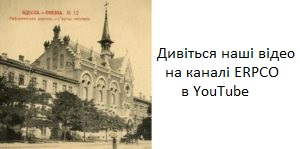The History of the Church
As a result of the victory in the Russian-Turkish war of 1787-1791, Russia reclaimed the territory along the Black Sea coast that belonged to the Slavs from times immemorial, which included the Turkish fortress and settlement named Hajibey. In 1794, the Russian Empress Catherine II founded the city of Odessa at this place. In 1804, supported by the government of the Russian Empire, there came to Odessa from Germany, Austria, Switzerland, and France, groups of Christians who were followers of the teachings of Luther and Calvin, the leaders of the great religious Reformation in Europe of the XVI century. At first, these Protestant Christians made a single congregation in Odessa, but in 1843, they were divided into the Lutheran and the Calvinist congregations. The Calvinists were called in England Presbyterians, in Switzerland and Holland the Reformed, in France the Huguenots. In the USA, the faith received the name of the Evangelical Presbyterian Church. Prior to the Communist revolution, the congregation in Odessa was called Reformed. It was destroyed in 1925 by the Soviet power and restored in 1996. Now its full name is the Evangelical Presbyterian Reformed church of Odessa.
About the building
In 1849, the governor of Odessa Mikhail Vorontsov allowed the Reformed congregation to buy by tender some shabby houses on the corner of Preobrazhenskaya and Khersonskaya streets. Tsar Nicholas I gave as a gift to the congregation the land for the construction of the house of worship. So in 1851, at this place the building of the Reformed church was erected, in place of which, again here, in 1896, the building was set up, which has lived up to this day.
The construction of the building was conducted by the engineer H. Skveder according to the project of the well-known architect from St. Petersburg, academician V. Schreter, under the supervision of the architect A. Bernardazzi. The three-floored building of the church housed a school, a library, a spacious hall for worship services where magnificent stained-glass windows were set, and a pipe organ was installed there. The church building’s interior was marked by strict simplicity.
In 2001, the newly established congregation restored most of the church building. The huge help in financing of the restoration works was rendered by the Presbyterian churches of America. The restoration works were carried out in line with the archival drawings. The style of the church building, its layout, and the stained-glass windows were preserved unchanged.

